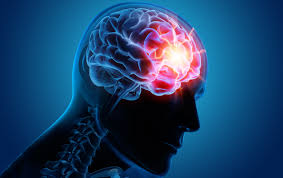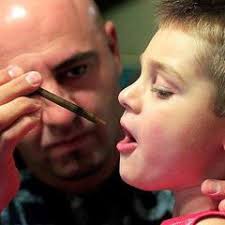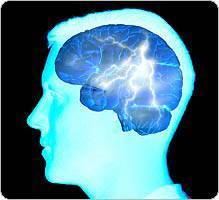CBD and epilepsy

Cannabidiol a solution to seizures?
The use of cannabis or hemp for epilepsy is perhaps one of the oldest known uses of cannabis derivatives . There is evidence of its use to treat epilepsies in some ancient civilizations such as China and Persia.
Today, epilepsy is the most common neurological disorder after migraine . Recently, CBD is considered by the scientific community to be a serious option to block or reduce the intensity and frequency of epileptic seizures.
Indeed, a large-scale study published at the end of 2018 has removed the last doubts about the effectiveness of CBD in the case of epilepsy. This question has been heavily debated in the scientific community in recent years despite the commercialization of Epidiolex by GW Pharmaceuticals, a Cannabidiol (CBD) drug to treat epilepsy.
What is epilepsy?
Epilepsy is a neurological condition characterized by abnormal electrical activity in the brain . This rapid increase in electrical activity of the brain will disrupt neuronal communication and can result in convulsions or jerky movements but also, less impressively, in hallucinations, abnormal sensations, staring, loss of consciousness. , etc…There is not one epilepsy but multiple forms of epilepsy . A person is considered to have epilepsy only if they are prone to repeated seizures.
Children and adolescents are most affected, but epilepsy can also occur in people over 65 years old.
In most cases, the causes are unknown but in 10 to 15% of cases they are hereditary. People with certain genes are more susceptible to conditions that trigger epileptic seizures. In some cases epilepsy is caused by brain trauma (stroke, etc.), infectious diseases (meningitis, viral encephalitis, etc.), prenatal lesions or developmental disorders ( autism , etc.)
After migraine, epilepsy is the most common neurological disorder. In France, there are between 400,000 and 500,000 people suffering from epilepsy . Globally, 5% of the population will have an epileptic seizure in their lifetime and 40 million people suffer from chronic epilepsy. For economic and social reasons, 3 out of 4 people with epilepsy are not treated.
Epilepsy : classic treatments
No treatment can cure epilepsy , but following drug treatment generally stabilizes the disease. The treatments, however, are often highly toxic.
Antiepileptics
Several types of medications can block or reduce the intensity and frequency of epileptic seizures. Phenytoin (like Dilantin), carbamazepine (like Tegretol), and valproic acid (like Epival) are medications that have been used for many years. They block the electrical impulse in the brain by reducing the reactions of the neurons that cause seizures. Others are more recent, such as gabapentin (Neurontin), lamotrigine (Lamictal) and topiramate (Topamax). These drugs all have significant side effects such as fetal malformations and bleeding disorders in newborns. born, developmental disorders and autistic disorders in children, the elimination of vitamin D in the body and therefore risk of osteoporosis .
Around 30% of epilepsy patients have drug resistance and therefore must turn to other types of treatments such as surgery.
Surgery
When drug treatments are ineffective, it is possible to carry out surgery which consists of incising or even removing the part of the brain linked to epileptic seizures . The evaluation phase which precedes surgery is very long because it involves numerous examinations but the removal of this part of the brain can cause a neurological deficit in the patient.
Radiosurgery is a still experimental method which consists of irradiating the area of the brain responsible for seizures, thus destroying only the diseased cells. This method is only applicable to treat small brain lesions .
Other methods
There are other less common techniques to reduce and control epileptic seizures such as vagus nerve stimulation. This method involves implanting a device under the skin that stimulates the vagus nerve by producing electrical impulses, thus reducing the intensity and frequency of attacks .
Fasting or the ketogenic diet , low in carbohydrates, allows you to increase the ketone level in the blood, which, for reasons that are still poorly explained, also helps reduce seizures.
The onset of epileptic seizures is often associated with a physiological imbalance: great fatigue, intense effort, significant stress, etc. It is therefore essential to have a healthy lifestyle to prevent seizures as much as possible.
Scientific evidence of the effectiveness of CBD
Recently, the effectiveness of CBD has only been proven on two rare forms of epilepsy, Dravet and Lennox-Gastaut syndromes, with a reduction in seizures of at least 50% in 40 to 50% of patients. This effectiveness rate corresponds to that of classic antiepileptic drugs but on rare forms of epilepsy, refractory to drug treatments and with very few side effects .
The first large-scale study on the effects of CBD on epilepsy was carried out by Professor Devinsky in 2017, on 108 children with Dravet syndrome. For this study, Epidiolex at a 10% CBD concentration was administered to children for 14 weeks, resulting in a 50% reduction in seizures in 43% of children taking CBD.
Another large study , also led by Professor Devinsky, was published at the end of 2018. This study involved 225 children and adults with Lennox-Gastaut syndrome who were administered Epidiolex at 10% concentration. in CBD. A 42% reduction in seizures was observed.
These studies show the effectiveness of CBD on rare forms of epilepsy that are refractory to drug treatments but other forms of epilepsy such as for example focal epilepsy of structural origin (due to a brain lesion) or idiopathic generalized epilepsy, have not yet been studied in a targeted and exhaustive manner. The effectiveness of CBD in these cases therefore still remains to be proven.
The endocannabinoid system and epilepsy
The endocannabinoid system is a set of neurotransmitters and neuroreceptors present in the nervous system and it plays an essential but still poorly understood regulatory role in physiological processes such as sleep , appetite , the pain system , and mood . The two main receptors that will process chemical messages from cannabinoids are called CB1 and CB2 . Taking CBD activates the CB1 and CB2 receptors which are themselves connected to the central nervous system. In the case of epilepsy, cannabidiol (CBD) is the main cannabinoid chosen by scientists for its effectiveness in the treatment of seizures. Epileptic seizures are the result of complex distinct dysfunctions and external factors and the exact mechanisms of CBD's action on seizures are not yet clearly defined by scientists. Despite everything, many avenues have been put forward, based on the results of clinical studies.
How does CBD work on epilepsy?
Regulation of vanilloid receptor activity
When TRPV1 vanilloid receptors are overactivated, they cause epileptic seizures. However, this study shows that cannabinoids CBD (cannabidiol) and CBDV (cannabidivarin) can regulate and control the overactivity of this receptor in the brain, thereby reducing epileptic seizures.
Anticonvulsant
In this study , different concentrations of CBD were administered to epileptic rats. The results show a significant decrease in muscle contractions during seizures in the group of rodents having received the highest dose of CBD.
Neuroprotective
According to several studies like this one , CBD has neuroprotective properties . CBD acts on the inflammatory process by inhibiting the production of cytokines and the release of glutamates and by reducing oxidative stress . Thus, the deterioration of cells is slowed and the renewal of neurons is promoted. Thanks to its functions, CBD improves the metabolic activity of the brain, which improves motor and cognitive performance .
CBD is used by a growing number of patients and is the subject of numerous studies on other neurological disorders such as multiple sclerosis, Alzheimer's, Parkinson’s , migraines, etc…
Anti-inflammatory
Numerous scientific studies on CBD and the endocannabinoid system (ECS), demonstrate its anti-inflammatory properties, its role as a regulator of the immune system and its influence on homeostasis (the body's ability to maintain its balance). This important study suggests, for example, that CBD inhibits the production of tumor necrosis factor , a cytokine involved in inflammation. Even if not all the mechanisms involved have been discovered, researchers agree on the fact that taking CBD activates neurological receptors which will help regulate inflammation .
What dosage of CBD?
As we saw above, there are possible drug interactions between CBD and certain traditional medications used for epileptic seizures. It is therefore very important to seek medical advice before taking CBD to ensure that there is no risk.
Unlike other pathologies where the most effective molecule from hemp is THC (Tetrahydrocannabinol), it is CBD (cannabidiol) which has been proven most likely to reduce the frequency and intensity of epileptic seizures.
In general, people with epilepsy need a higher than average dose and oils with a high concentration of CBD are therefore the most indicated.
Each person responds differently to cannabinoids and a gradual approach is always recommended. Start with low doses and gradually increase them after a few days until you achieve the desired effect. You can consult our page “Dosage” to know more.
In conclusion
The effectiveness of CBD has been demonstrated for two forms resistant to conventional treatments, Dravet and Lennox-Gastaut syndromes, thanks to two recent studies involving a large number of patients.
CBD therefore constitutes a serious treatment option with very promising results although further studies are necessary to demonstrate its effectiveness on other forms of epilepsy. The advantages of CBD are its effectiveness and minimal side effects compared to traditional treatments.
Many people suffering from epilepsy turn to CBD . But it remains important talk to your doctor about CBD .


